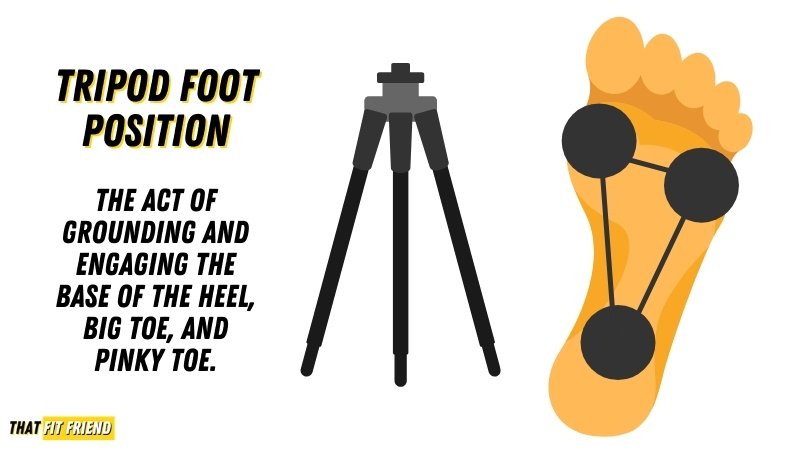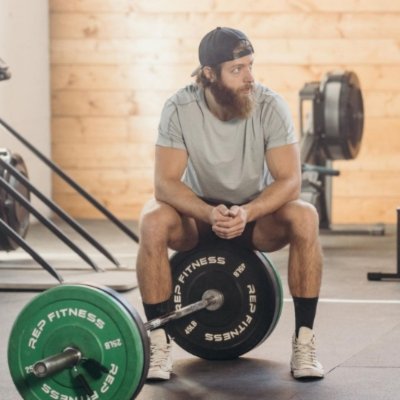Throughout my lifting career, I’ve always been a fan of training barefoot or in socks, and there’s a good reason for this. I think every lifter can benefit from barefoot lifting here and there especially since the feet play such an incredibly large role in our performance output.
It may not seem like it from a macro level, but pretty much every lift technically starts from the feet. Yes, even bench pressing can be positively influenced by what our feet are doing.
The feet play key roles in our performance and these include promoting and supporting our sensory input, balance, and force production. They’re essentially the main drivers for how we produce force through the ground and sense the world around us.
To be successful in any lifting setting, there needs to be positional cognizance, A.K.A, an awareness of how we’re producing force through space and time while managing the mechanics that we’re working to maintain.
A common question that I get asked in regard to barefoot and minimalist shoes is, “Are barefoot and minimalist shoes good for lifting?”
Benefits of Barefoot Shoes for Lifting
In this article, I want to discuss four benefits of barefoot and minimalist shoes in lifting settings. As a coach and trainer, I’m constantly assessing how people move and helping them optimize movement patterns to improve performance output.
In my opinion and from my experience, the feet are constantly overlooked by athletes and lifters from all walks of life. We put on our cross-training shoes, head to the gym, and then forget about the important roles the feet can play in our lifting.
Do note, that this article is not intended to “sell” you on barefoot or minimalist shoes, but more so to highlight how beneficial barefoot training can be when used strategically.
For example, I like to implement and add in more barefoot-style lifting every other mesocycle to build my foot strength and focus on natural movement.
1. Improved Sensory Input
When lifting in barefoot and minimalist style shoes, we tend to get an increase in sensory input. This means that as we navigate the world around us, our feet have a better means of sensing what we’re stepping on, how we’re moving, and then giving all of this information back to the brain.
In the context of lifting, this can play a huge role in balance and making small form tweaks throughout various movement patterns. If we can better sense the world around and under us, then we can be much more granular with how we’re shifting force into the ground through our feet.
For example, let’s say we’re doing split squats and we want to create a quad bias where we’re promoting more knee tracking and a slight drive and bias through the balls of our feet. If we’re wearing thicker training shoes with large stack heights, then we may find that we’re a bit limited with our abilities to create a true bias of force production.
A thicker stack height training shoe will put more space between the foot and the ground and decrease our foot’s ability to sense the ground under it. Not to mention, thicker shoes can also cause our balance to decrease due to foam and other material compressing under the loads we’re moving.
The same could be applied for machine exercises, too. Let’s say you’re on a leg press and you want to create a glute bias where your feet are positioned slightly higher on the platform. If we have more sensory input through our barefoot and minimalist shoes, then we can better align our focus and intent with the muscle we’re trying to hit and further bias how we’re pressing into the platform. Details matter for specific adaptations.
2. Better Balance
To piggyback off of sensory input, a byproduct that we’ll also experience is an improvement in balance. To test this, stand on one leg, focus on your foot, and hold this single-leg position for 20-seconds. Perform this once barefoot and once with a thicker training shoe. Which was easier to do?
More than likely, you noticed your foot flexing and moving when barefoot. Could you notice this happening to the same degree with your shoe on? You likely performed the task without issues with your shoes on, too, but what I want you to focus on is the granular contractions and movements of the foot when balancing.
With an increase in sensory input, our balance and proprioception will also improve. With the entirety of the foot having a better sense for the ground under it, we can then move with more balance and create a sequencing of our limbs that feels more natural for the task at hand.
For context, similar to the hand, the foot has a ton of nerve endings that help provide feedback to the brain. This feedback then helps increase our means of proprioception, or how we navigate the world around us through space and time, A.K.A improving our balance.
3. Natural Lower Body Starting Positions
When we elevate the heels, we put the foot into a natural degree of plantarflexion. This initial starting plantarflexion then shifts our weight slightly forward and creates an environment where dorsiflexion can be slightly easier to achieve.
This is why we’ll see weightlifters, powerlifters, and other lifters wear weightlifting shoes when squatting and performing other exercises where achieving depth with upright torso mechanics is desired. Their elevated heel shoe use is contextual per the specificity of their goals.
In the context of movement in general where an elevated heel isn’t necessarily desired, starting from a barefoot position can help increase cognizance of starting postures. If we’re starting every lift with a slightly forward knee due to elevated heel footwear, then we’ll adapt to this style of footwear.
This isn’t necessarily a bad thing, however, we’re not always wearing shoes with elevated heels, so it’s a good idea to have a range of footwear to bridge what it feels like to start movements from a barefoot versus elevated heel environment. I’m a big fan of cognizance of variability per one’s goals and as an athlete and a lifter have a wider range for understanding postures is a good thing.
Basically, it’s a good idea to work with both styles of footwear to bridge your abilities to tackle a variety of goal-focused movement tasks and increase mental awareness of movement styles.
4. Potential for Increased Force Production
Another benefit of training barefoot especially in the context of lower body movements is the potential to increase our power output. To better produce power in most static strength contexts, we need an initially stable base to work from.
If the feet are closer to the ground, then the feet can fully engage with the environment around them, and the foot muscular can work in the means that they’re supposed to. More stable bases have the potential to increase total power output.
Think about deadlifting heavy weight in a pair of running shoes or training shoes with a thick midsole and high stack height. The thicker material can limit the overall stability of the foot and limit how “connected” you feel to the ground.
This is why a lot of lifters talk about maintaining a tripod foot position when performing more static exercises to ensure you’re producing the most amount of force possible.
For lower body exercises where balance and foot contact are of high importance, more barefoot and minimalist shoes can help promote performance by increasing our ability to produce force through the ground due to an increase in the foot’s surface area.
Takeaway Thoughts
To wrap this article up in a nice concise manner, I think three takeaways can be beneficial for every lifter and athlete consider barefoot and minimalist shoes for lifting.
- Barefoot and minimalist shoes can help promote sensory input from the ground and assist with balance-focused goals and demands.
- When opting for footwear when lifting, consider your goals and how a shoe’s construction and heel elevation can influence movement mechanics.
- It’s probably a good idea for every lifter to utilize barefoot or minimalist shoes here and there to build their range for understanding multiple styles of movement.
Remember, you don’t need to go out right away and buy a pair of barefoot or minimalist shoes. I’d suggest starting by training here and there with just your socks as this is free and easy to implement.
Then, as you continue to dive down the rabbit hole of understanding the differences in movement that various footwear can provide, it will help further direct if you should invest in a pair of barefoot shoes or not.












Add a Comment